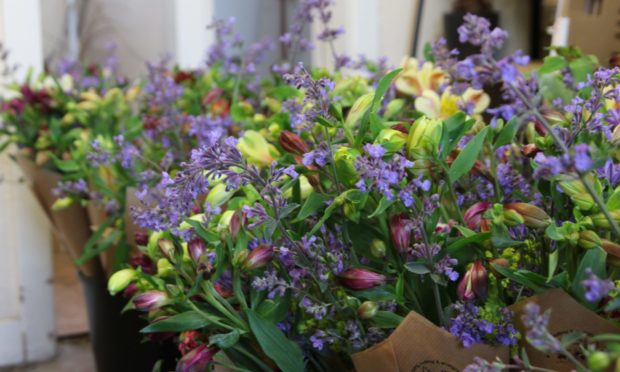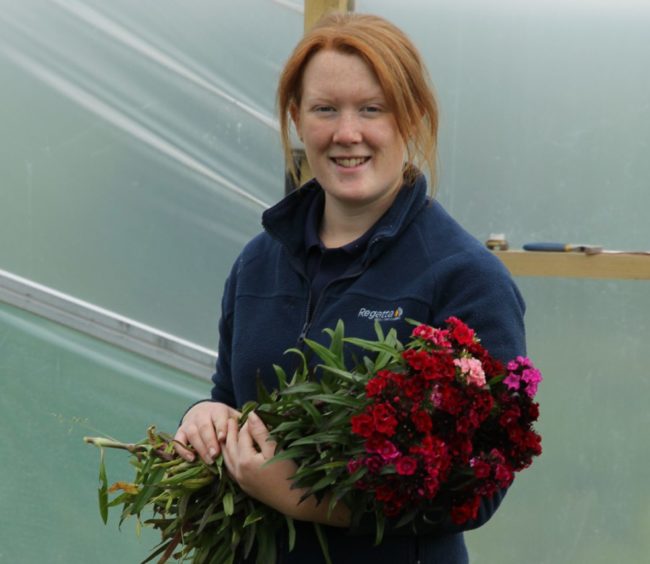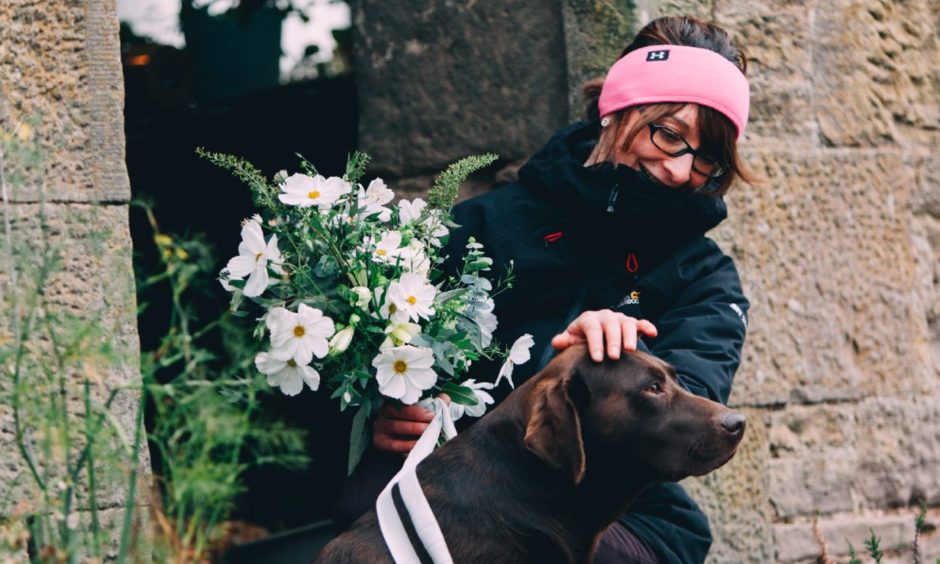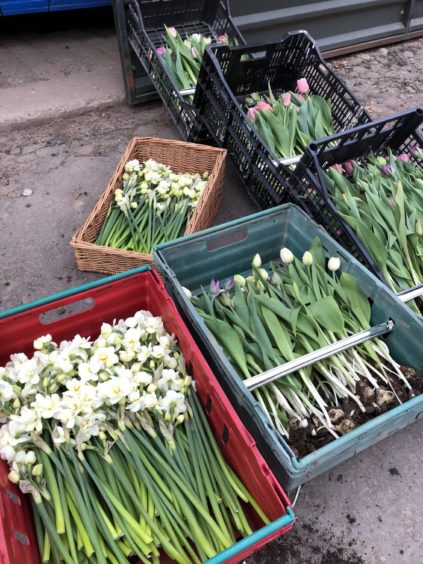Valerie Orr is better known as a Shorthorn breeder than a flower grower, but as half of the Forfar-based Blooming Bees duo, her horticultural career is blossoming.
Blooming Bees was established at Wardmill Farm by Kelly Orr – no relation – seven years ago, and Valerie joined the business last year to help drive an expansion programme which will see the pair focus on supplying florists, farm shops and brides with freshly-cut seasonal flowers.
As a members of the newly-formed Flowers Grown in Scotland (FGIS) movement of 60 mainly small and part-time producers, they believe the country can start to compete with the imported flowers that have traditionally come from Dutch auction houses after being flown in from all over the world.
“It’s great to get the FGIS brand mark going to raise awareness of what we can grow here in Scotland,” said Valerie.
“Until now Blooming Bees has focused on producing flowers for weddings, but there’s a huge untapped domestic resource, especially post-Brexit. Florists are seeing increases in the prices of imported flowers and are suddenly looking closer to home for a regular supply. We can grow a great product here as the cooler climate lends itself to slower grown flowers – and we can do it without all the air miles.”
Around an acre of land and a polytunnel is now devoted to a range of flowers including tulips, anemonies and ranunculus, narcissi and daffodils, followed by summer annuals such as snapdragons, sweet William and chrysanthemums.
Valerie is frequently seen at the end of a halter at summer shows, leading her prized Trainview stock, but before she moved to Scotland from Northern Ireland she had her own horticultural business on her family’s farm – an enterprise now run by her mother.
In Valerie’s experience horticulture is an ideal farm diversification.
“Its on a different scale, for sure,” she said.
“Whereas a farmer might have 100 acres of barley we’ve got 100 varieties in an acre, but it’s good revenue and you can work round the demands of livestock. You’re still growing crops and the agronomy isn’t too different – you’re dealing with a lot of the same pests, so there’s a crossover.”
The UK cut flower and indoor plant market is worth £2.5bn, with flowers accounting for around £800m. Supermarkets handle around 60% of all sales, florists 25% and the remaining 15% are local sales.
FGIS point to the characteristics of Scottish-grown flowers:”Provenance, variety, artisanal, carbon credentials, good scent, and long shelf/vase life. Scotland can grow equally if not more beautiful flowers than the rest of the world, just with fewer air miles.
Other local members of FGIS include Grampian Growers and the Flower Field at Blackiemuir Farm, Laurencekirk.



